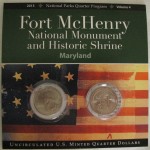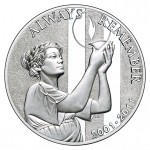The U.S. Mint Responds… YAWN!
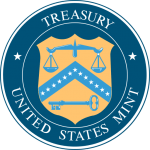 Following the debacle that became of the online ordering process for the End of World War II 75th Anniversary American Eagle Coins, the U.S. Mint issued a statement on social media. On Twitter, the U.S. Mint posted in a series of tweets that read:
Following the debacle that became of the online ordering process for the End of World War II 75th Anniversary American Eagle Coins, the U.S. Mint issued a statement on social media. On Twitter, the U.S. Mint posted in a series of tweets that read:
The 2020 End of WWII 75th Anniversary American Eagle One Ounce Gold Proof Coin and the End of World War II 75th Anniversary American Eagle Silver Proof Coin were released for sale at noon ET on November 5. (1/4) pic.twitter.com/rFPeyrFZgD
— United States Mint (@usmint) November 5, 2020
Release of these coins resulted in the highest website traffic we have ever experienced, which greatly exceeded our expected capacity. This high volume caused website instability, and customers encountered error messages and in some cases were unable to purchase products. (2/4)
— United States Mint (@usmint) November 5, 2020
Due to extremely high demand, the American Eagle Gold Proof Coin became unavailable by 12:07 p.m. We are pleased with the initial demand, but are also in the process of evaluating the various customer concerns and system constraints and/or failures we experienced. (3/4)
— United States Mint (@usmint) November 5, 2020
We want to assure you that the United States Mint remains committed to providing the highest possible level of customer service, and regret any inconvenience or frustration this buying experience caused. (4/4)
— United States Mint (@usmint) November 5, 2020
When people complained, whoever is posting on their social media platforms commented:
We regret any inconvenience or frustration this buying experience caused, and are working to resolve the system issues.
— United States Mint (@usmint) November 5, 2020
The problem is that there have been problems for many years. Every time the U.S. Mint offers a limited edition coin, their website has problems meeting the demand, leading to an apology and a promise that they will resolve the system issues.
Searching this blog, you can find problems with the ordering process for:
- Eisenhower Coins and Chronicles Set (2015)
- Enhanced Reverse Proof 2019-S American Eagle (2019)
- 25th Anniversary American Silver Eagle Set
- Bald Eagle Commemorative Coins (2008)
- Mint Director Ed Moy apologizes
What you will not find is a story where the ordering process went smoothly. You will not find a story where the U.S. Mint claims that they have fixed their ordering problems. And you will be able to find a story where the U.S. Mint explains how they plan to fix the problems.
From 2016 through 2019, the U.S. Mint has held a collecting forum in Philadelphia. Each year, the U.S. Mint has invited people from all areas of the industry to meet with them and discuss the future of the U.S. Mint’s products. The coronavirus pandemic prevented them from holding this year’s forum. After every forum, the U.S. Mint thanks the participants and promises to do better.
Unfortunately, politics have hurt the U.S. Mint. Since the resignation of Ed Moy in December 2010, they had been without a director until the appointment of David J. Ryder in April 2018. During the time between appointments, the Senate refused to confirm three nominations made by President Barack Obama to fill the position. Instead, there was an endless line of acting directors, which the law limits the term to 210 days.Ryder is not a stranger to the U.S. Mint or the federal government. Besides working at the Commerce Department, he served in the Office of the Vice President for George H.W. Bush. Bush appointed Ryder as the 34th Mint Director during a Senate recess in 1992.
Before joining the U.S. Mint, Ryder worked for the Secure Products division of the Sarnoff Corporation. After purchased by Honeywell in 2007, he was Director of Currency for Honeywell Authentication Technologies. Ryder can lead an organization looking in the critical security of currency handling with worldwide influence, but he cannot manage the U.S. Mint out a technological paper bag.
As a former federal contractor, I understand that the contracting process is slow. The federal government acquisition process is fraught with checks, rechecks, oversight, and investigations that drive up a hammer’s price to thousands of dollars. But it is the same process to purchase a tool as it is to make a change to a fighter jet costing tens of millions of dollars.
The U.S. Mint has done some work on the website. Aside from changing the look, they replaced the content management system which manages the site. For the technologically savvy, they migrated from the original Drupal implementation to WordPress. The Coin Collectors Blog uses WordPress.
Although the transition to WordPress may provide the flexibility the U.S. Mint needs to manage the website, they have not met the critical need for customer engagement. Fixing customer engagement in a government agency requires the head of the agency to initiate that change. What has Ryder been doing?
Although the pandemic caused significant interruptions in everything, developers do not have to be on-site to develop software. A program can write programs from just about anywhere. Why were these processes not managed in the subsequent months?
I am asking Ryder to step up to his role and better manage the situation. I am not calling for the removal of Ryder. (POLITICAL ANALYSIS ALERT: Don’t read the rest of the paragraph if you do not like a frank discussion of politics as it affects the U.S. Mint). If Ryder leaves his position, President-elect Biden will likely never have an appointment voted on by the Republican-controlled Senate. We will be back to the nearly eight years of Acting Directors who do not have the authority to make necessary changes as the appointed director could.
Please, Director Ryder, fix the problem. Maybe you can listen to the collecting community. We have good ideas, and we are willing to help.
The law of unintended consequences
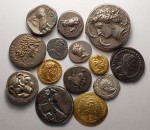 Fred and Wilma (not their real names) are friends who decided to celebrate their empty nest by taking a trip to the Mediterranean after dropping their youngest child off at college. Fred is what I respectfully call a hacker. He is a wizard programming computers and someone who I go to in order to understand some of the more esoteric aspects of computer exploits he researches. In his spare time, Fred plays with his computers and tinkers with electronics. Fred is also known as an overgrown boy scout. He is contentious about his work, children, and the activities he is involved with. Fred is probably the most honest person I know.
Fred and Wilma (not their real names) are friends who decided to celebrate their empty nest by taking a trip to the Mediterranean after dropping their youngest child off at college. Fred is what I respectfully call a hacker. He is a wizard programming computers and someone who I go to in order to understand some of the more esoteric aspects of computer exploits he researches. In his spare time, Fred plays with his computers and tinkers with electronics. Fred is also known as an overgrown boy scout. He is contentious about his work, children, and the activities he is involved with. Fred is probably the most honest person I know.
Fred is not a coin collector and has no interest in collecting coins even though he does own the 2004 Thomas Edison commemorative coin and the 2005 Albert Einstein 2 Shekel proof coin from Israel because these are two people he admires. On many occasions, Fred has said that he did not understand what I saw in collecting coins. Even after showing him my original Lincoln cent folder with coins I have found in change dating back to when I started collecting, he did not understand the lure of the chase.
While sitting on a beach along the Mediterranean, Wilma started to dig in the sand around a sleeping Fred to have fun at his expense. After she dug nearly two feet down, Wilma unearthed metal object that she originally thought was trash. After waking Fred and watching him roll into her newly dug hole, Fred brushed himself off and looked at what she found. A trip to the water to rinse off the items to find three ancient coins and a shell. The way it was described to me was that the coins were sitting in the shell as if it were a change holder. They dug some more and found three more coins. To some degree, he began to understand the thrill of the chase.
With the help of the hotel concierge, Fred and Wilma found a coin dealer who spoke English to ask about the coins. After talking with the dealer they found that the coins were common and would only be worth the equivalent of a few dollars. Undeterred, the coins were placed in a small bag and throw in the bottom of their carry on luggage as souvenirs and continued with their vacation.
A few days later, Fred and Wilma packed their bags and went to the airport to return home. At their host country’s departure screening, Fred was asked if there was anything to declare. Fred, being an overgrown boy scout, declared everything—even things he did not have to declare. As the officers were inspecting the items on the table, one picked up the bag with the coins and asked about coins. Fred showed the officer the written estimate from the dealer thinking that would resolve any issue.
According to Fred, the officer took coins and the estimate to another officer he described as having more decorations on his uniform. This higher ranking officer looked at the coins and paper while discussing the situation in their native language. After a moment, Fred became concerned and Wilma became nervous.
Another officer walked over with the higher ranking officer and acted as a translator as it was explained to Fred that the coins were “cultural antiquities” and would be confiscated. Fred was not happy but he accepted the situation until the translator said that Fred and Wilma would be detained while the officials investigated. They were allowed to gather their luggage and were escorted to a nearby room.
After waiting for an hour, another official came into the room and spoke to Fred and Wilma in English. Fred explained how he obtained the coins and why he was taking them home. After the official started questioning them as if they were criminals Fred asked to speak with the United States Embassy.
Fred and Wilma were escorted by local police to two separate facilities to be incarcerated pending an investigation. The facilities were in separate parts of town since these were not co-ed accommodations. They waited two days before seeing anyone other than the guards.
Two days later, both were escorted to a local judge and said they were being charged with trying to smuggle antiquities out of the country. An attorney was appointed to represent them. The attorney did not speak English and only wanted them to plead guilty for a three-year sentence. Thankfully, there was an American in the courtroom who told the attorney that he would contact the U.S. Embassy and not to plead on the case.
The next day, someone from the Embassy was able to have Fred and Wilma released to their custody, recovered their luggage, and let them stay in the embassy while trying to resolve the situation.
Obviously, the embassy accommodations were better than what they had at the local jail. Fred described the embassy staff as very nice including the natives who worked non-diplomatic jobs. Unfortunately, they could not leave the embassy since they were technically under house arrest. Although it was a gilded cage it was still a cage.
It took nine days to resolve the issue which Fred was told was lightning speed for that country. The coins were left in the country they were visiting, which Fred offered to do at the airport when confronted by the officials. They were driven to the airport by a U.S. military driver and escorted to the screening area by a member of the diplomatic staff who ensured their passports were returned and that they were allowed to board the plane.
The plane landed in a more friendly country where Fred and Wilma were met by local and U.S. officials for a debrief. Although the debrief was friendly, it did come after a stressful period in another country and lasted a few hours. Eight hours after landing in London, Fred and Wilma was en route back to the United States.
The country where this incident occurred is allegedly friendly with the United States but that did not stop the officials at the airport from treating them with suspicion over the possession of a few common ancient coins. Based on Fred’s description of the coins, I asked a dealer who said that $20 would be an average retail price for the coins. When asked if Fred wanted to buy similar coins, Fred could not decline fast enough!
I have written several posts about the impact of the Convention on Cultural Property Implementation Act (CPIA; 19 U.S.C. §§ 2601 et seq.) and the potential for foreign countries to use Memoranda of Understanding that the State Department’s Cultural Property Advisory Committee (CPAC) agrees to without considering citizen comments. The CPAC has said that the collateral issues raised by the comments are baseless. Fred can tell them otherwise.
Fred said that the embassy would not answer questions about what happened. Neither did the government officials during their layover in Europe. He was told that they should be thankful that this “only” lasted two weeks because it could have taken two months or even two years to resolve.
Next time the Ancient Coin Collectors Guild (ACCG) asks for assistance in addressing a call for comments from the CPAC regarding a foreign country’s MOU request, please remember the plight of Fred and Wilma. Although their ordeal lasted “only” two weeks, the next person may not be as lucky and find themselves in the jail of a country whose laws are far less humane than the United States.
Defenders Day at Fort McHenry
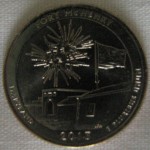 On Monday, September 12, 1814 the British invasion fleet landed at North Point in Baltimore and tried to capture Baltimore by attacking Fort McHenry. Before the attack on Baltimore, the British marched through Washington, D.C. and burned the capital building. On their march to Baltimore, the British took Dr. William Beanes as a prisoner for his role in capturing British stragglers and deserters. Beanes was imprisoned in Baltimore as the Royal Navy gathered forces for their attack on Fort McHenry in Baltimore Harbor.
On Monday, September 12, 1814 the British invasion fleet landed at North Point in Baltimore and tried to capture Baltimore by attacking Fort McHenry. Before the attack on Baltimore, the British marched through Washington, D.C. and burned the capital building. On their march to Baltimore, the British took Dr. William Beanes as a prisoner for his role in capturing British stragglers and deserters. Beanes was imprisoned in Baltimore as the Royal Navy gathered forces for their attack on Fort McHenry in Baltimore Harbor.
Word of Beanes’s capture reached Francis Scott Key, an accomplished lawyer, prosecutor, poet, and friend of Dr. Beanes. Key, who was known as a skilled negotiator and a very temperate man, was asked by the Army to accompany prisoner exchange agent Colonel John Stuart Skinner to Baltimore to secure the release of Dr. Beanes. On September 7, 1814, Key and COL Skinner dined with British officers abroad the HMS Tonnant to negotiate the release of prisoners. Although Beanes was released, the British would not let the men leave the ship because they had heard about the British plans to attack Fort McHenry.
Key, Skinner, and Beanes watched as the Royal Navy bombarded the fort and surrounding areas of Baltimore. As the smoke cleared on the morning of September 14, 1814, after 25-hours of bombardment, Key was able to see the U.S. flag still flying over Fort McHenry. Key was so moved by the sight that after returning home, he wrote the poem “The Defence of Fort McHenry.” The poem was published in the Baltimore Patriot on September 20, 1814.
Following the War of 1812, Baltimoreans celebrated the victory every year on September 12 but did not gain statewide recognition until the centennial celebration in 1914, even though the celebration was overshadowed by World War I. Celebrations waned during the Great Depression until it became an official holiday in 1957. Defenders Day would become popular again in the 1980s with the help of the National Park Service and the Fort McHenry Guard.
- Obverse of the Fort McHenry Commemorative Medallion for sale at the gift shop.
- Reverse of the Fort McHenry Commemorative Medallion for sale at the gift shop.
This year, Defenders Day was celebrated on Friday, September 13. With a crowd of area students, area residents, dignitaries, and members of the Maryland State Numismatic Association, the Defenders Day celebration kicked off at Fort McHenry with the launch ceremony of the Fort McHenry National Monument and Historic Shrine quarter.
With Ranger Bailey as the master of ceremonies, the program features Park Superintendent Tina Cappetta, Maryland Senator Ben Cardin (D), Representative John Sarbanes (D) whose district includes Fort McHenry, Representative C.A. “Dutch” Ruppersberger (D) whose district covers parts of Baltimore not in Sarbanes’ district, Baltimore Mayor Stephanie Rawlings-Blake (D), and Treasurer of the United States Rosie Rios.
Speeches were interspersed with a performance from the Notre Dame Prep (Towson, MD) Choir, ceremonial drills from the Fort McHenry Guard, and the Fort McHenry Fife and Drum Corps. Prior to end of the ceremony, Treasurer Rosie Rios presented a special plaque with examples of the Fort McHenry Quarters to Superintendent Cappetta.
The ceremony ended with the dignitaries on the stage pouring a bucket of quarters into a old ammunition box.
Following the ceremony the dignitaries handed out quarters to to the students who sat through the ceremony. These children were attentive and appreciative of the ceremony and the quarter.
Clearly, the most popular person giving out quarters was Mayor Rawlings-Blake of Baltimore. Rawlings-Blake is a native of Baltimore, mother, and younger than the other politicians in attendance. It was clear that she connected better with the students than the other politicians.
After the quarters were handed out, the students toured the park visiting the various stations setup to teach them about why Maryland celebrates Defenders Day.On my way out of the park, I made the obligatory stop in the gift shop. Surrounded by students having fun looking at the items for sale, I found a card issued by the National Park Service with the Fort McHenry quarters commemorating the fort. The back of the card says that a portion of the proceeds are donated to the National Park Conservation Alliance. I also purchased a commemorative medal with a hologram on both sides. The images on the obverse commemorate the Star-Spangled Banner while the reverse shows the fort.
Not a bad way to spend the morning in Baltimore before having to return to work.
A whole lotta bread
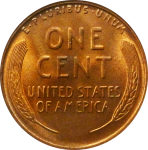 When Teddy Roosevelt became the 26th President of the United States following the assassination of William McKinley, he set out to reform the United States into a robust nation giving everyone opportunities while protecting what he felt made this nation great. One of Roosevelt’s reform was to redesign U.S. coinage that he called his “pet crime.”
When Teddy Roosevelt became the 26th President of the United States following the assassination of William McKinley, he set out to reform the United States into a robust nation giving everyone opportunities while protecting what he felt made this nation great. One of Roosevelt’s reform was to redesign U.S. coinage that he called his “pet crime.”
Roosevelt hated the designs created by U.S. Mint Chief Engraver Charles E. Barber. In fact, Roosevelt had called Barber’s designs “atrociously hideous.” Roosevelt ordered coinage whose designs were more than 25 years old to be redesigned. Since Roosevelt was a fan of sculptor Augustus Saint-Gaudens, he asked Saint-Gaudens to help redesign American coinage.
Before Saint-Gaudens would finish, he died of cancer in 1907.
Roosevelt still wanted to redesign the cent but did not have any ideas. In 1908, Roosevelt was posing for a Panama Canal service medal that was being designed by Victor David Brenner. Brenner, an immigrant who admired Abraham Lincoln, suggested that he design a coin honoring Lincoln to coincide with the centennial of Lincoln’s birthday in 1909. Roosevelt asked for samples and agreed to Brenner’s design proposal.
Brenner designed the reverse of the with two ears of durum wheat, one the most prolific wheat grown in the United States today. Wheat is the United States’ most successful crop and largest agricultural export.
Not only is it a successful crop, but over the 50 years in production, the U.S. Mint has produced a lot of its own wheat with every cent it made.
If you think about it, all that wheat could make a lot of bread.
- The seeds on the stalk of wheat is called a kernel.
- On average, there are 48 kernels in a head of wheat and 15,000 to 17,000 kernels in a pound.
- According to the National Association of Wheat Growers, there are 1 million kernels of wheat in a bushel.
- Since there are two heads of wheat on the reverse of the Lincoln cent, there are about 96 kernels of wheat per coin.
- According to the U.S. Mint, there were 25,980,000,000 (25.98 billion) wheat cents struck between 1909 and 1958.
- To find the number of kernels of wheat produced, multiply the number of kernels per cent (96) by the number of cents struck: 96 x 25,980,000,000 = 2,494,080,000,000 (2.49408 trillion) kernels of wheat.
- If there are 1 million kernels of wheat per bushel, 2.49408 trillion kernels/1 million = 2,494,080 bushels of wheat produced by the U.S. Mint.
- The National Association of Wheat Growers claim a bushel of wheat yields 42 one-and-a-half pound commercial loaves of white bread or about 90 one-pound loaves of whole wheat bread. Let’s use an average of 66 loaves of bread per bushel.
Don’t like bread? What about pasta?
We’ll need a few extra meatballs for dinner!
- The idea for this post came from Montgomery County Coin Club Treasurer Jack Schadegg during a talk at our recent coin club meeting.
- Various sources were used to calculate and verify the production of Lincoln cents from 1909 though 1958.
- The National Association of Wheat Growers’ website provided the capacity figure.
- Lincoln cent wheat ears reverse image courtesy of Wikipedia.
Twelve years ago
Twelve years ago, I was a few miles away from the Pentagon when a plane crashed into its side. I remember driving to work hearing about the plan crashes in New York originally thinking that what I predicted many years ago finally came true, a small plane crashed into the World Trade Center. The reports turned grim as I kept driving toward my office.
When I arrived, I sat in the car a while listening to the radio and trying to call friends I knew who worked in lower Manhattan. I remember one was working in the World Financial Center across the street from the Twin Towers. I later found out that he had taken a job on the other side of the river in New Jersey a year earlier.
Another friend was working in 6 WTC, a 40 story building next to 2 WTC or Tower 2. Thankfully, he and his coworkers were able to escape before the second tower collapsed onto that building.
Just after the plane crashed into the Pentagon we were sent home.
I came home to the empty house my late first wife and I bought. She had died five months earlier and this time, the quiet of the house was deafening. I tuned on the television just before the second tower collapsed.
Although it was twelve years ago, I remember the day like it happened yesterday. Those who were around when President Kennedy was assassinated say the same thing about that day. It is difficult to forget these traumatic events, which is good. We should not only remember them but remember what happened after in order to do better next time. We need to learn from history rather than repeat it.
-
September 11 National Medal obverse features Lady Liberty holding the Lamp of Remembrance. Behind her are beacons of light stretching skyward. Liberty, the lamp and the light symbolize not just the immeasurable loss on that fateful day, but also the resiliency and triumph of those who persevered. The inscriptions are ALWAYS REMEMBER and 2001–2011.
Designer: Donna Weaver
Engraver: Phebe Hemphill
-
September 11 National Medal reverse depicts an eagle, symbolizing the strength of the survivors, families and Nation, against a backdrop of cascading water. The flowing water is emblematic of peace, serenity, healing and the continuity of life. The inscriptions are HONOR and HOPE.
Designer: Donna Weaver
Engraver: Joseph Menna
NEW FEATURE: Numismatic Glossary
Although many of us have agreed to speak in a common language, communities tend to take the language and mold it to make it unique to their situation. It is the most evident in the differences between terms we use here in the United States versus those used in Great Britain. Just look at your car and know that the compartment that contains the engine is under the hood here in the United States while the engine is in the bonnet in England. As George Bernard Shaw is credited with saying, “England and America are two countries separated by a common language.”
Numismatics is no different. Tell a numismatist that a coin is in good condition and the novice does not understand why the numismatist is no longer interested in the coin. Depending on the coin, a fine coin does not excite either.
What does it mean?
What is a a “bourse?”
Or to say a coins has been plugged?
What is “mint state?”
Now you have a place to look up the words. Under the tab, “Collector’s Reference” at the top of this page there is a new submenu titled Numismatic Glossary. The Coinblog’s Numismatic Glossary is the result of a one year collection of numismatic terms and the attempt to write good (or just decent) definitions of those terms.
I am publishing the Numismatic Glossary is a resource to the numismatic community. While I tried to be as accurate as possible, it is possible that I made a mistake. It is also possible that I left something out. If you have a correction or a request for me to add a term, please drop me a note and let me know.
EDITED TO ADD: I also updated the U.S. Coins by Type page to include the 2013 American Buffalo reverse proof coin.
Happy Collecting!






